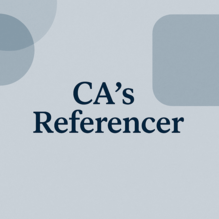Audit Committee Chairs Expect Clear, Open Communications From Auditors – PCAOB Report
May 30, 2025
During discussions with external auditors, public company audit committee chairs focus significantly on factors affecting their relationships, such as communication, coordination, and technical expertise, according to a new Public Company Accounting Oversight Board (PCAOB) report published on May 15, 2025.
Audit committee chairs emphasized that open communication is crucial to ensure the audit committee is informed of audit risks and areas of focus.
“In a few cases where the auditor was replaced, insufficient communication was identified as a key factor that led to the audit firm’s dismissal,” the report notes, highlighting conversations with 272 audit committee chairs during 2024 inspections.
The chairs also stressed the importance of coordination between the auditor, management, and the audit committee for a successful audit.
In addition, they highlighted the significance of the audit team’s technical expertise and experience, as well as the firm’s ability to retain personnel with industry experience.
The PCAOB has conducted these annual conversations during audit inspections for several years. In 2024 over three-fourths, or 78%, of the audit committee chairs had not previously spoken with the PCAOB as part of the board’s outreach process.
Beyond relationship factors, audit committee chairs also spend considerable time discussing:
Firm inspection reports: Most chairs review the latest inspection reports and other PCAOB website information when deciding whether to reappoint the auditor. “When considering changing audit firms, the findings in the reports were particularly important,” the report states.
The economic environment affecting the audit: Discussions often cover elevated interest rates, increased risks including fraud and technology, supply chain disruptions, inflation, and geopolitical considerations. The chairs noted that discussions with auditors largely focused on the risks these topics presented and how the audit team planned to address them.
Auditing and accounting, including critical audit matters (CAMs): About 63% had additional discussions beyond required communications with auditors on topics like revenue recognition, lease accounting, current expected credit losses, cybersecurity disclosures, and the Securities and Exchange Commission’s (SEC) climate-related disclosure requirements. While 60% said CAMs inform stakeholders of auditor focus areas, several chairs suggested CAMs should be more concise, easier to read, and more tailored to the company.
The impact of emerging technology: Chairs acknowledged technology’s potential to enhance audit procedures but stressed the necessity of human oversight. They expressed concerns about overreliance on technology and automation, which could lead to complacency and inadequate professional judgment and skepticism.
Generally, audit committee chairs of companies audited by non-affiliated firms (NAFs) focused more on significant transactions, fraud risks, and related procedures to address fraud risk, as well as internal controls. In contrast, chairs of companies audited by global network firms (GNFs) concentrated more on independence and accounting issues.
The report also includes a section on frequently asked questions by audit committee chairs during conversations with inspectors:
How are audits selected for review? Both risk-based and random methods.
What does an inspection entail? Assessment of compliance with relevant rules and standards.
Can the PCAOB share inspection results during calls with audit committee chairs? No.
How do comment forms increase audit quality? They provide a structured method for inspectors to communicate potential deficiencies, prompting audit firms to review and improve their audit practices.
Does the PCAOB have educational training or events for audit committee members? They are invited to attend webinars and roundtables.
[Thomson Reuters]


